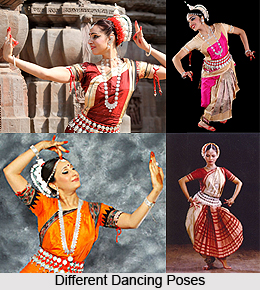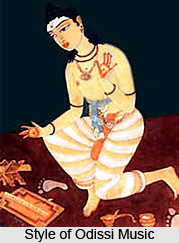 Odissi Music is a very old classical Indian style of music with specific Raagas, Taals, and its own special style of rendering of lyrics and melody. It belongs to the genre of Classical music of India and has its origins in the eastern Indian state of Orissa. Indian Classical Music has five main branches- Avanti, Panchali, Udramagadhi, Hindustani and Carnatic Music. Of these, Udramagadhi exists in the form of Odissi music. Odissi songs traditionally depict the love and frolics of Radha and Lord Krishna. Odissi dance is one of the classical dances of India performed with Odissi music.
Odissi Music is a very old classical Indian style of music with specific Raagas, Taals, and its own special style of rendering of lyrics and melody. It belongs to the genre of Classical music of India and has its origins in the eastern Indian state of Orissa. Indian Classical Music has five main branches- Avanti, Panchali, Udramagadhi, Hindustani and Carnatic Music. Of these, Udramagadhi exists in the form of Odissi music. Odissi songs traditionally depict the love and frolics of Radha and Lord Krishna. Odissi dance is one of the classical dances of India performed with Odissi music.Origins of Odissi Music
Odissi Music has a rich history and dates back to the 2nd century BC. Originally Odissi was sung to the dance of the 'Maharis' (Devadasis) at the Jagannath Temple, and was later sung to dances by young boys, 'Gotipuas' performing Odissi dance. The Odissi music of today has evolved from the style of 'Gotipua' music. In its earliest days the Odissi style of music and dance was patronised by Kharvela, the ruler of Orissa (Kalinga). The music form got shaped during the time of famous Odiya poet Jayadeva. He was the first one to compose lyrics which were meant to be sung. Later, by the 11th century AD, the folk music of Orissa which existed in the form of Triswari, Chatuhswari, and Panchaswari, came to be adapted into the classical style.
Style of Odissi Music
The Taal forms the most important part of Odissi Music, and all songs are to be sung in specific raagas and taals.
 The Odissi taalas have a different distribution of beat and pause from the north and south Indian taalas. Though Odissi music is thus a unique blend of South and North Indian classical music, it has its own distinct qualities. For instance, some taals in Odissi music that are similar to Hindustani classical music are 'Jhampa' and 'Jhaptaal', 'Atta' and 'Chautaal', 'Aditaal' and 'Tritaal'. Typical Odissi taals, however, are different from that of Hindustani music in division of beats and bols. Odissi music gives great importance to the lyric where words are required to be sung without fragmentation or distortion. Also, a lot of importance if singing is laid on the text of the song known as 'Prabandha'.
The Odissi taalas have a different distribution of beat and pause from the north and south Indian taalas. Though Odissi music is thus a unique blend of South and North Indian classical music, it has its own distinct qualities. For instance, some taals in Odissi music that are similar to Hindustani classical music are 'Jhampa' and 'Jhaptaal', 'Atta' and 'Chautaal', 'Aditaal' and 'Tritaal'. Typical Odissi taals, however, are different from that of Hindustani music in division of beats and bols. Odissi music gives great importance to the lyric where words are required to be sung without fragmentation or distortion. Also, a lot of importance if singing is laid on the text of the song known as 'Prabandha'.The typical Odissi style of singing starts with a short 'Aalap' with typical Odissi 'Andolan' followed by the main song 'Prabandha' where the use of 'Boltan' elaborates the raaga. 'Boltan' is also used to demonstrate various 'Abhinayas' during dances performed to these songs. 'Taan' is usually in the form of 'Sargam' and is usually at the end of the song. It is set to the beats and pauses of the taal. 'Padi' (lyrics sung to a different division of beats of the same taal) is typical to the Odissi style although all songs may not have 'Padi'. Usually, 'Padi' is sung at a faster speed than the main song.
For more, visit the link below: